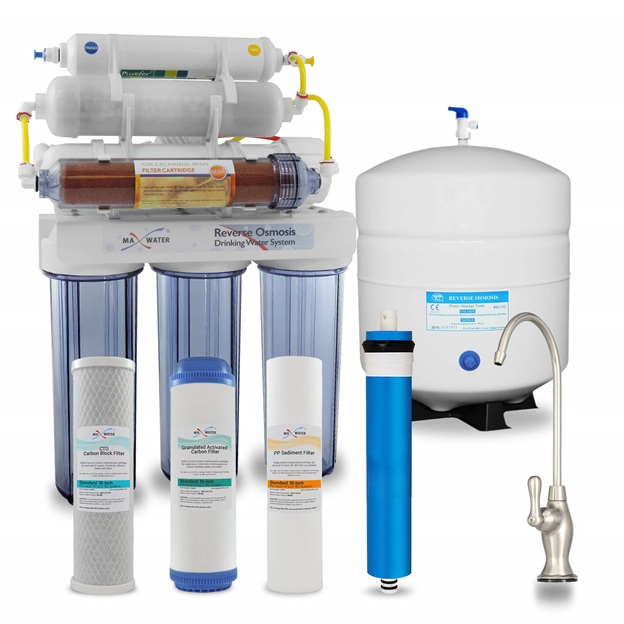
Although rust is often referred to as one element, it is actually made up of many compounds that contain iron and oxygen. When iron isn’t oxidized by water and oxygen, rust forms. Depending on the amount of rust, the watercolor in your home may be yellow, orange, or brown. Iron is more common in rusty pipes than in well-water systems. This can lead to water problems. You can get rid of rust in your home using water softeners and oxidizing filters.
Step 1 – Connect your ion exchange water swimmer to your water supply. This device will have sodium which will be combined with iron to remove rust from your water.
Step 2 Install an oxygenizing filter before you install the water softener. This device will have manganese oxides which will convert soluble compounds to insoluble compounds. The water will then be filtered out. The best oxidizing filters are used to treat water with moderate levels of concentrated iron and a pH of at least 6.8
Step 3 Use a solution feeder for adding polyphosphates into your water supply. The phosphorus in polyphosphates is dispersed in the water so that the iron doesn’t turn to rust. A polyphosphate chemical feeder is more costly than other options. If rust problems are serious enough to warrant the use of a polyphosphate feeder, it is not recommended.
Add about half a gallon of bleach to your water supply. Allow the bleach to set for 12 hours before running the water. This method is most effective if the rust is being produced from bacteria.
This post was written by a water treatment expert at Pure Blue H2O. At Pure Blue H2O we are the providers of the best Reverse Osmosis Filter System! We know that the best product comes from the best materials. They offer whole home water solutions such as showerhead filtration, filter replacements, and a variety of similar products. Their focus is to provide Americans with safe and clean water throughout the home.
Looking for reliable water filters in NZ? Look no further than Sue Kelly’s range of high-quality products.
Legionella services encompass a range of offerings aimed at preventing and managing Legionella bacteria in water systems. These may include risk assessments, water testing, system monitoring, and the development of control measures to ensure compliance with regulations and safeguard public health.
Water level can refer to the height or position of water in a specific container, such as a reservoir, tank, or lake. Monitoring water levels is crucial for various applications, including managing water resources, preventing flooding, and ensuring the proper functioning of equipment like boilers or cooling systems.





